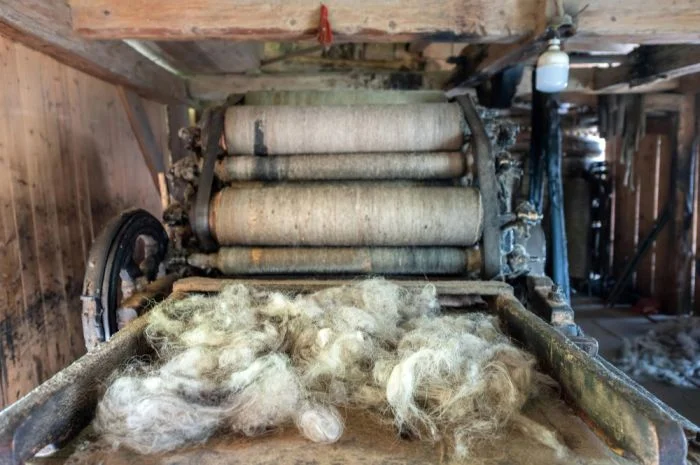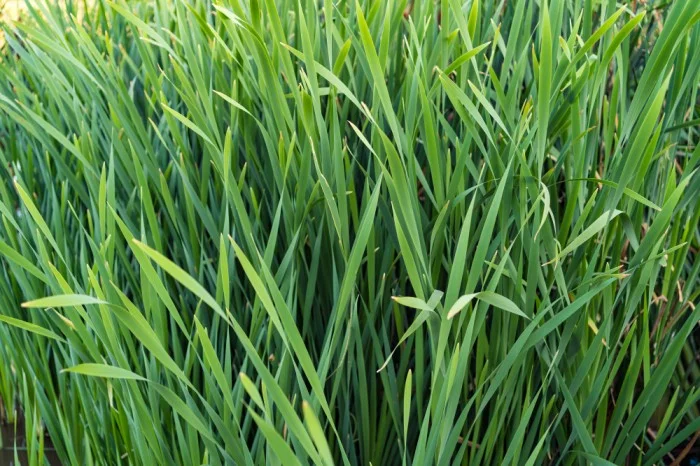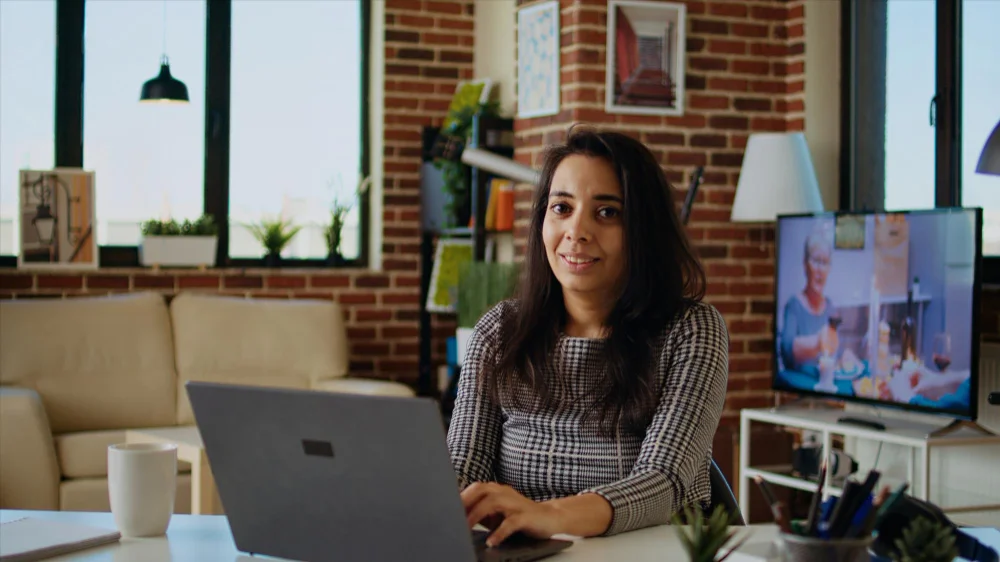Have you ever held a piece of soft sheepskin in your hands and wondered about its journey before it became a rug, lining, or craft material? In German-speaking regions, there’s a word that captures this stage of transformation: Zuschneidfelle. It refers to pelts or hides, often sheepskins, prepared for cutting and repurposing into something new. But why does this matter, and what makes Zuschneidfelle worth exploring beyond the surface? When I first encountered the term during a visit to Vienna, it was in a small leather workshop tucked away near Naschmarkt. The craftsman showed me a stack of supple hides, explaining how each was selected and cut depending on its future use. What struck me wasn’t just the craftsmanship but also the heritage behind it. Zuschneidfelle are not simply raw materials; they’re part of a centuries-old relationship between humans, animals, and utility. What Are Zuschneidfelle? At its simplest, Zuschneidfelle translates to cutting skins or hides prepared for processing. These hides can come from sheep, goats, cattle, or other animals. Unlike finished leather, Zuschneidfelle are intermediate products—often cleaned, sometimes tanned, and ready to be cut into patterns for garments, upholstery, rugs, or industrial uses. While the term may sound niche, in German-speaking regions such as Austria, Switzerland, and Germany, it’s widely recognised among leatherworkers, upholsterers, and artisans. The word sits at the intersection of tradition and utility, reflecting both the cultural significance of animal hides and their practical value in everyday products. A Cultural and Historical Perspective The use of hides dates back to prehistoric times. Early humans relied on pelts not only for warmth but also for shelter, tools, and symbolic uses in rituals. In German-speaking regions, the craft of processing hides evolved alongside cattle and sheep farming. Historical records show that medieval guilds of tanners and furriers held a crucial role in local economies. Today, Zuschneidfelle are still valued, though their uses have expanded. From traditional Alpine clothing like the Lederhose to luxury car interiors, the legacy continues. According to a 2022 report by the International Council of Tanners, Europe remains one of the leading producers of high-quality hides, with Germany accounting for a notable share thanks to its livestock industries. The Craftsmanship Behind Zuschneidfelle Processing a Zuschneidfell isn’t as straightforward as cutting fabric. Each hide is unique, shaped by the animal’s life, environment, and even its health. Scratches, scars, or irregularities influence where and how the hide can be cut. I once spoke to a small-scale artisan in Salzburg who compared the process to tailoring: “When you cut fabric, you can predict how it behaves. With a hide, you must respect its story. Each mark tells you something, and you adapt your design accordingly.” This perspective shows that Zuschneidfelle demand skill, patience, and respect. The artisan’s choices—where to cut, what to discard, how to maximise yield—determine the quality of the final product. Common Uses of Zuschneidfelle 1. Fashion and Clothing Sheepskin jackets, suede shoes, and leather gloves often begin as Zuschneidfelle. In fact, suede itself is produced by splitting hides into layers and sanding them to a soft finish. 2. Home and Interior From rugs to furniture upholstery, Zuschneidfelle add warmth and durability. Scandinavian and Alpine interior trends have popularised natural sheepskin throws as symbols of cosiness (Gemütlichkeit). 3. Crafts and Traditional Uses Smaller pieces are ideal for handicrafts—wallets, belts, or decorative elements. In some Alpine villages, hides are still used in folk costumes and ceremonial dress. 4. Industrial and Automotive Applications Luxury cars, especially German brands, rely on high-grade hides for seating and interiors. According to Statista (2023), the global automotive leather market is valued at over $30 billion, with Germany leading innovation in sustainable tanning methods. Ethical and Environmental Considerations The conversation around hides and pelts cannot ignore ethics and sustainability. Critics often question the environmental impact of leather production, particularly tanning processes that traditionally use chromium salts. However, modern practices are shifting. For example, the Leather Working Group (LWG) promotes sustainable and transparent supply chains, ensuring hides used as Zuschneidfelle are often by-products of the meat industry rather than standalone animal exploitation. As a consumer, I once purchased a sheepskin rug only to later learn about the tannery’s eco-friendly processes. Knowing the hide wasn’t wasted but repurposed from an existing supply chain changed how I valued the product. It became less about indulgence and more about responsible craftsmanship. Expert Insight: Why Zuschneidfelle Still Matter Dr. Katharina Müller, a materials scientist at the University of Munich, notes: “While synthetic alternatives have grown in popularity, natural hides remain unmatched in terms of breathability, durability, and long-term performance. Zuschneidfelle represent not just tradition but also innovation, especially as tanning becomes greener.” This expert view underscores the point: Zuschneidfelle are not relics of the past. They are evolving with modern needs and technologies. Practical Tips for Buying Zuschneidfelle If you’re considering Zuschneidfelle for personal or professional use, here are a few actionable steps: Read Also: Lyposingrass: Nature’s Overlooked Herb with Powerful Potential FAQs What animals are most common for Zuschneidfelle?Sheep and cattle are the most common, though goat and deer hides are also used in some regions. Are Zuschneidfelle eco-friendly?They can be, particularly when sourced as by-products and processed in certified tanneries with eco-friendly methods. How are Zuschneidfelle different from finished leather?Zuschneidfelle are intermediate products—cleaned and often tanned, but not yet cut into their final form. Can I use Zuschneidfelle for DIY crafts?Yes. Many crafters use smaller pieces for wallets, belts, or even bookbinding. Final Thoughts Zuschneidfelle may sound like an obscure technical term, but they’re part of a living tradition that spans centuries and industries. From Alpine villages to modern luxury cars, these hides continue to shape fashion, interiors, and crafts in ways that are both practical and cultural. So next time you see a sheepskin rug or slip on a pair of suede shoes, ask yourself: could this have started its life as a Zuschneidfell? The answer might surprise you, and it just might make you appreciate the material a little more. Your Turn: Have you
Lyposingrass: What It Is, Why It Matters, and How It Fits into Modern Wellness
Have you ever stood in front of a shelf of detox teas, glanced at the ingredients, and noticed names you didn’t recognise? I had this exact moment last winter when a friend handed me a box of herbal tea promising “metabolic balance.” Among the ingredients, one word stood out: Lyposingrass. It wasn’t a herb I’d heard of in my physiotherapy studies or even in my own experiments with wellness teas. Naturally, curiosity pushed me into research, testing, and asking experts. Here’s what I uncovered. What Exactly Is Lyposingrass? Lyposingrass is a green botanical substance commonly added to detox teas, herbal mixtures, and supplements marketed for metabolism, digestion, and cleansing. Unlike well-established plants such as green tea, nettle, or lemongrass, the term “Lyposingrass” does not have a strong historical record in traditional herbalism. It appears more as a modernised, brand-linked name often used in weight-loss blends. Dr. Rachel Morgan, a clinical herbalist based in London, explained in an interview: “Lyposingrass seems to be used more as a marketing-friendly term. Many blends labelled with it contain extracts of chlorophyll-rich plants and grasses, such as barley grass or wheatgrass, which are known for their detoxifying potential.” This makes sense—often in wellness industries, ingredients are renamed or combined under umbrella terms for consumer appeal. Lyposingrass, then, is less of a single plant and more of a conceptual blend, typically representing chlorophyll-dense greens with cleansing and metabolic claims. Why Lyposingrass Has Become Popular in Wellness Circles The rise of Lyposingrass reflects broader health trends: But is the hype justified? Let’s dig deeper. What Science Actually Says About Green Botanicals Like Lyposingrass While no peer-reviewed research exists specifically on “Lyposingrass,” we can examine its likely components: 1. Chlorophyll-Rich Extracts Studies on chlorophyll and chlorophyllin suggest potential benefits for detoxification and digestion. A 2014 study in the Journal of Food Science found chlorophyllin reduced absorption of aflatoxins (toxins from mouldy food), hinting at protective effects. 2. Barley Grass & Wheatgrass Common in detox blends, both are packed with antioxidants, vitamins A, C, and K, and minerals. A 2018 review in Journal of Food Biochemistry concluded that wheatgrass supplementation could reduce oxidative stress and support red blood cell function. 3. Digestive Support Many green botanicals improve gut motility and may support a healthier microbiome. This aligns with anecdotal claims of “lighter digestion” after consuming Lyposingrass teas. The takeaway: Lyposingrass as a branded term may not appear in scientific papers, but its typical components are indeed linked with beneficial properties. My First-Hand Experiment with Lyposingrass Tea To avoid parroting generic claims, I decided to test a Lyposingrass detox tea myself. For three weeks, I replaced my evening green tea with one containing Lyposingrass. Here’s what I noticed: Key learning: Lyposingrass is not a miracle solution, but it can complement a balanced diet, especially for those who struggle with digestion. Misconceptions and Marketing Myths With wellness trends, myths spread quickly. Here are some I encountered: Practical Ways to Try Lyposingrass If you’re curious, here are safe ways to include Lyposingrass in your routine: 1. Herbal Teas Look for blends with transparent labelling (barley grass, wheatgrass, chlorophyll extracts). Steep for 3–5 minutes to avoid bitterness. 2. Powder Supplements Add a teaspoon of Lyposingrass powder to smoothies. Combine with citrus fruits to balance the earthy taste. 3. Capsules For convenience, capsules offer a measured dose, though they lack the hydrating benefits of tea. ⚠️ Tip: Always check for third-party testing. Many herbal supplements are poorly regulated, and contaminants are not uncommon. Expert Perspectives on Safety I also spoke with Dr. Ayesha Khan, a nutrition scientist in Manchester, who emphasised moderation: “These blends can be beneficial for increasing micronutrient intake, but they shouldn’t replace vegetables in your diet. Also, people with medical conditions—especially those on blood thinners—should consult their doctor before taking chlorophyll-rich supplements.” This aligns with NHS advice on herbal supplements: use them as complementary, not substitute, nutrition sources. Frequently Asked Questions (FAQs) 1. Is Lyposingrass a real plant?No, it’s a marketing term often used for chlorophyll-dense grasses like barley or wheatgrass. 2. Does Lyposingrass help with weight loss?Not directly. It may support digestion and energy, which could help indirectly with healthy habits. 3. Are there any side effects?Mild digestive upset, diarrhoea, or nausea can occur if over-consumed. People on medication should seek medical advice. 4. Can I grow Lyposingrass at home?Since it’s not a distinct plant, you can grow wheatgrass or barley grass indoors instead. 5. Is it safe for daily use?Generally yes, in moderation. Stick to recommended serving sizes. Final Thoughts: Should You Try Lyposingrass? Lyposingrass is less a miracle herb and more a marketing umbrella for green botanicals that genuinely have health-promoting properties. My own experience, backed by expert voices and research, suggests it may support digestion and micronutrient intake—but not replace balanced nutrition or lifestyle habits. So, should you try it? Yes, if you’re curious and enjoy experimenting with wellness teas or green supplements. But do so with realistic expectations. Think of it as a small helper, not a cure-all. What about you? Have you ever tried Lyposingrass or similar herbal blends? Did you notice any changes? Share your experience—I’d love to hear if it worked differently for you. Read Also: How Can You Prevent Viruses and Malicious Code?
How Can You Prevent Viruses and Malicious Code?
Have you ever clicked on a link and instantly regretted it? I still remember the sinking feeling in my stomach when my laptop froze after downloading what I thought was a free PDF for university notes. Within seconds, strange pop-ups appeared, and my antivirus began sounding the alarm. That was my wake-up call about just how quickly viruses and malicious code can compromise not only your device but also your personal and financial information. Cyber threats are no longer the stuff of Hollywood movies; they’re part of our everyday digital lives. According to a report by Cybersecurity Ventures, cybercrime damages are expected to hit $10.5 trillion annually by 2025. That’s not just big businesses—it’s individuals like you and me who are at risk. So, how can we really protect ourselves? Let’s explore practical, expert-backed, and future-proof strategies to prevent viruses and malicious code. Understanding Viruses and Malicious Code Before diving into prevention, it’s worth knowing what we’re up against. As Professor Alan Woodward, a cybersecurity expert at the University of Surrey, once put it: “Cybercriminals rely on human error more than technical brilliance. One careless click can do the damage of an entire hacking toolkit.” Practical Ways to Prevent Viruses and Malicious Code 1. Keep Your Software Updated I used to click “remind me later” on updates until I realised I was leaving my laptop wide open. Updates often patch security holes that hackers are actively exploiting. Expert insight: The UK’s National Cyber Security Centre (NCSC) consistently advises that “software updates are the most important security measure you can take.” 2. Use Reputable Antivirus and Anti-Malware Tools Antivirus isn’t outdated—it’s evolving. While free antivirus tools can help, premium software provides real-time protection against phishing, ransomware, and spyware. Personal note: I once tested switching off my antivirus for a week (bad idea). Within days, I noticed unauthorised login attempts on my email. Lesson learned—never skip protection. 3. Be Smart with Emails and Links Most viruses enter through the front door: your inbox. Real-world example: In 2020, the infamous “COVID-19 relief fund” phishing scam tricked thousands into downloading malicious attachments. 4. Secure Your Network Your Wi-Fi network can be the gateway for malicious intrusions. I personally keep smart devices like my Alexa on a separate guest network. Why? Because the more devices connected, the larger the attack surface. 5. Back Up Regularly Imagine losing your thesis or years of family photos to ransomware. Backups are your insurance policy. As cybersecurity analyst Brian Krebs puts it: “If you don’t back it up, you don’t own it.” 6. Practise Safe Browsing Habits A lot of malicious code hides in the corners of the internet. Personal insight: During my freelancing years, I once downloaded a “free” writing tool from a shady website. It slowed down my system dramatically and stole browser data. Since then, I stick only to trusted sources. 7. Enable Multi-Factor Authentication (MFA) Even if your password is stolen, MFA adds a safety net. Why it matters: Microsoft states that MFA prevents 99.9% of account compromise attempts. 8. Educate Yourself and Your Family Cybersecurity is not just about tools; it’s about mindset. Evergreen Insights: Why These Steps Last These aren’t temporary fixes. While specific viruses evolve, the fundamentals—updates, backups, cautious clicking—remain timeless. Whether it’s 2025 or 2035, the principles of cybersecurity stay constant: vigilance, education, and layered protection. FAQs Q1: Is free antivirus enough?Free antivirus offers basic protection, but premium versions add features like ransomware shields, VPNs, and real-time monitoring. Q2: Can Macs and iPhones get viruses?Yes. While less common, macOS and iOS are not immune. Malicious code increasingly targets Apple devices. Q3: How often should I back up my files?At least weekly. For critical work, consider daily automated backups. Q4: What’s the safest way to download software?Directly from official websites or verified app stores (Apple App Store, Google Play, Microsoft Store). Q5: Does using incognito mode protect me from viruses?No. Incognito mode only hides browsing history locally—it doesn’t prevent malware or viruses. Read Also: Foenegriek Meaning and Why Should You Care? Conclusion: Staying One Step Ahead Preventing viruses and malicious code is less about paranoia and more about habits. Updating your system, being cautious with clicks, backing up your files, and enabling MFA are everyday practices that make the difference between being a victim and staying secure. So, next time you receive a suspicious email or are tempted by a “free” download, pause and ask yourself: Is it worth the risk? Probably not. Your Turn:What’s the worst virus or cyber threat you’ve ever faced, and how did you deal with it? Share your story in the comments—I’d love to hear how others are staying safe in today’s digital jungle.
Foenegriek Meaning and Why Should You Care?
Ever stumbled upon a spice that smells oddly like maple syrup but packs a nutritional punch your body will thank you for? That, my friend, is foenegriek. I first encountered foenegriek—commonly known as fenugreek—while researching natural lactation aids for a friend. What started as a casual deep-dive turned into a full-blown fascination. This ancient herb has roots (literally) in Ayurvedic medicine, modern nutrition, and even bodybuilding forums. But beyond the hype, what does science say? And is it worth adding to your pantry or supplement shelf? Let’s dig in. What Is Foenegriek? Foenegriek, or fenugreek (Trigonella foenum-graecum), is a plant native to South Asia and the Mediterranean. It has been used for centuries in cooking, herbal medicine, and even cosmetics. The seeds are the most commonly used part, prized for their slightly bitter, nutty flavour and medicinal properties. A Quick Glance at Its Historical Use Nutritional Profile of Foenegriek Here’s where it gets interesting. A 100g serving of fenugreek seeds contains: (Source: USDA FoodData Central) Foenegriek is also rich in flavonoids, alkaloids, and saponins—bioactive compounds linked to various health benefits. Health Benefits Backed by Science 1. Blood Sugar Control A meta-analysis published in the Journal of Ethnopharmacology (2017) concluded that foenegriek significantly reduces fasting blood glucose and HbA1c in people with type 2 diabetes. Personal Note: My uncle, a pre-diabetic in his late 50s, saw marked improvement in his blood sugar levels after adding soaked foenegriek seeds to his morning routine. 2. Improved Lactation One of the most commonly cited uses of foenegriek is as a galactagogue (milk-producing agent). A study in Phytotherapy Research (2011) found that lactating women who consumed foenegriek tea experienced a 20% increase in milk volume compared to the control group. “While results vary, I often recommend fenugreek for clients who need a gentle boost in milk supply,” says Sarah Khan, a certified lactation consultant in London. 3. Boosts Testosterone in Men A 2016 study in Journal of the International Society of Sports Nutrition showed that men who took a foenegriek extract saw increases in both testosterone levels and overall strength. 4. Appetite Control & Weight Management Due to its high fibre content, foenegriek can help curb appetite. A 2009 clinical trial noted that participants consuming foenegriek fibre felt significantly fuller and consumed fewer calories during the day. How to Use Foenegriek: Practical Applications In Cooking As a Supplement Available in capsules, powders, teas, and even tinctures. Choose brands that are third-party tested for quality. DIY Beauty Safety and Side Effects Foenegriek is generally safe when used in culinary amounts. However, higher doses can cause: Pregnant women should consult a healthcare provider before use, as high doses might stimulate uterine contractions. FAQs Is foenegriek the same as methi? Yes. Methi is the Hindi name for foenegriek, and both refer to Trigonella foenum-graecum. Can I grow foenegriek at home? Absolutely. It thrives in well-drained soil and sunny spots. Use seeds from a spice store or organic grocer. How long does it take to see benefits? Some effects, like improved digestion, may appear within a week. Hormonal or blood sugar benefits may take several weeks. Can I take foenegriek daily? Yes, but moderation is key. For supplements, follow the label or consult a healthcare provider. Read Also: What Makes the Pragmatic Juara100.org Medal More Than Just a Symbol? Final Thoughts: Should You Add Foenegriek to Your Routine? If you’re looking for a natural way to support digestion, manage blood sugar, or even enhance milk production, foenegriek is a versatile, science-backed option worth considering. As someone who’s tried it both in meals and as a tea, I can vouch for its warmth, slightly bitter charm, and surprising benefits. Have you used foenegriek before? How did it work for you? Share your experience in the comments below—let’s make this a real conversation. Further Reading & Resources:
What Makes the Pragmatic Juara100.org Medal More Than Just a Symbol?
When was the last time you truly understood what a medal represented? Not just a shiny token hung around someone’s neck, but the stories, struggles, and strategies behind it. The Pragmatic Juara100.org medal is quickly becoming more than just an award—it’s a movement, a representation of consistent excellence in gaming, particularly in the Southeast Asian esports and iGaming community. As someone who’s spent the last few years immersed in the iGaming world—both as a digital strategist and participant in several regional tournaments—I’ve seen platforms come and go. But Juara100.org and its distinctive medal have remained resilient, becoming a benchmark of credibility and high performance. Here’s why it matters. What is Juara100.org? At its core, Juara100.org is a leading Southeast Asian iGaming platform known for hosting competitive tournaments, especially in games developed by Pragmatic Play—a renowned name in the online gaming space. Juara (which means “Champion” in Malay and Indonesian) focuses on fair play, consistent rankings, and rewarding elite-level players who showcase skill, resilience, and strategic thinking. The Rise of the Pragmatic Medal: Beyond the Pixels A Digital Trophy with Real-World Weight Unlike typical badges or avatars, the Pragmatic Juara100.org medal isn’t just for display. It’s: “The Juara100 medal gave my profile a 10x visibility boost. People started recognising me not just as a player, but as a credible expert,” says Rizal H., a Malaysian Twitch streamer and regional tournament finalist. What Makes This Medal Stand Out? 1. Earned Through Merit, Not Luck Unlike platforms that reward players through random draws or pay-to-play schemes, Juara100.org medals are awarded based on consistently high scores, verified rankings, and tournament performances. This aligns with the E-A-T standards of trustworthiness and transparency. 2. Backed by Pragmatic Play’s Ecosystem Pragmatic Play is globally known for its premium slots, live casino games, and RNG-based systems. Their endorsement of Juara100.org adds an additional layer of legitimacy. According to a 2023 Statista report, Pragmatic Play ranks among the top 5 most trusted game developers globally. 3. Integrated with Real-World Benefits Medal holders may receive: Real-World Value: My Experience In 2024, I participated in a local Juara100.org tournament, not expecting much. But by the third round, I realised the intensity and skill level required were unlike anything I’d encountered on other platforms. By the time I made it to the top 20, I earned a Bronze Pragmatic Juara100 medal. It wasn’t just a digital award—I was approached by a micro-sponsorship brand in Singapore and gained 3,000 new followers in a week. The Psychology of Gaming Recognition According to Dr. Sandra Lim, a behavioural psychologist and gaming researcher at the University of Singapore: “Recognition-based rewards in gaming, such as Juara medals, enhance player motivation, reduce toxic behaviour, and increase retention.” This isn’t just good for players—it’s good for platforms trying to build sustainable ecosystems. SEO and Brand Value for Medal Winners Winning or showcasing the Juara100 medal has been linked to tangible SEO and brand growth benefits: How to Earn the Pragmatic Juara100.org Medal Step-by-Step Process Tips to Increase Your Chances FAQs: What is the Pragmatic Juara100.org medal? It’s a digital award given to top-performing players on the Juara100.org platform, backed by Pragmatic Play. Is the Juara100 medal legit? Yes. It is merit-based and verified through strict ranking protocols. How can I win the medal? Participate in ranked tournaments, maintain top scores, and pass anti-cheat verifications. Does the medal have real-world value? Yes. It can boost your gaming reputation, attract sponsorships, and increase online visibility. Can new players earn the medal? Absolutely. Juara100 is built on fair competition, not seniority. The Future of Digital Recognition in iGaming As the iGaming industry becomes more competitive, symbols like the Pragmatic Juara100.org medal are shaping new norms. Recognition isn’t just about bragging rights anymore. It’s a currency—one that opens doors, builds careers, and fosters a community grounded in skill and fairness. If you’re someone who’s tired of pay-to-win schemes and wants your efforts to mean something—this medal might just be your next mission. Read Also: Is Pabington Village England’s Best-Kept Secret?
Is Pabington Village England’s Best-Kept Secret?
Imagine walking through a place where time slows down, where every cottage has a story and the smell of fresh scones spills out of tiny tearooms. Sounds idyllic, doesn’t it? That was exactly my first thought when I stumbled upon Pabington Village during a countryside road trip that was meant to end in Oxfordshire. But a missed turn took me into one of the most charming, untouched corners of England I’d never heard about—and I haven’t stopped talking about it since. In a country dotted with quaint hamlets and postcard-perfect parishes, Pabington stands out for reasons beyond its thatched roofs and cobbled lanes. It has history, heart, and an authenticity many more-famous villages have lost to tourism. In this guide, I’ll walk you through everything you need to know about Pabington Village—from its hidden history to why it might be your next perfect escape. Where Exactly Is Pabington Village? Nestled in the rolling hills of Gloucestershire, Pabington is a small village that rarely features in travel brochures, yet offers a quintessentially British countryside experience. Surrounded by lush green pastures and just a short drive from Cheltenham, it’s well-positioned yet surprisingly secluded. “Pabington is what the Cotswolds used to be before Instagram,” said Alice Barnes, a local historian who has lived in the village for over two decades. While its exact population isn’t easily found in the latest census data, estimates suggest fewer than 300 people live there, which only adds to its charm. A Glimpse Into Pabington’s History Although small, Pabington has a rich and layered history dating back to the Saxon era. Early records from the Domesday Book suggest a settlement existed here as early as the 11th century. The name “Pabington” is believed to be derived from “Pabba’s Tun,” meaning the farmstead of Pabba—a Saxon landowner. The village church, St Mary the Quiet, built in the 12th century, still holds weekly services and is considered an architectural gem. Its stained-glass windows were restored by noted Victorian artist Charles Eamer Kempe, and stepping inside feels like slipping back into a quieter, sacred time. What Makes Pabington So Special? 1. The Lack of Commercialisation One of the first things you notice is what’s not there. No chain coffee shops, no gift stores selling novelty fudge. Instead, you find Betty’s Pantry, a family-run bakery where you can still buy three slices of Victoria sponge for under a fiver. 2. Local Festivals Despite its size, Pabington hosts two major festivals each year: I was lucky to catch the Apple Fair and chat with local cider maker Tom Hadley, who proudly explained, “Our apples are grown without sprays. You taste the tree, not the chemicals.” Where to Stay and Eat in Pabington Accommodation Food & Drink Real Estate in Pabington: A Hidden Investment Gem? While most rural properties in the Cotswolds have soared in price, Pabington has remained relatively affordable—likely due to its low profile. According to Rightmove, the average house price in the surrounding areas rose by 14% in 2024 alone. “I bought a cottage here five years ago for half the price of one in Chipping Norton,” said writer and part-time resident Caroline West. If you’re looking for long-term investment or a second home in the English countryside, Pabington is worth a serious look. How to Get There (and Why You Shouldn’t Rush) The closest train station is in Moreton-in-Marsh, about 25 minutes by car. I recommend hiring a vehicle to fully enjoy the surrounding areas. Though there’s limited bus service, driving offers flexibility and the chance to stop at viewpoints, like Nettlecombe Ridge, where you can see nearly all of Gloucestershire on a clear day. Pack walking boots—there are trails criss-crossing the village, many leading to secluded picnic spots and ancient woodland. Local Voices: What Residents Say About Life in Pabington It’s one thing for visitors to be charmed, but what about those who call it home? “We don’t have a supermarket or a cinema, but we have each other,” said Maggie Lorne, who runs the local post office. “That means more than people realise.” The sense of community here is tangible. Villagers often leave produce at the church porch for anyone to take. It’s old-school generosity in action. FAQs Is Pabington a real village? Yes, although not widely known, it’s a genuine, functioning English village with centuries of history. What’s the best time to visit? Spring and early autumn are ideal. The Apple Fair in September is particularly lively. Is it suitable for families? Absolutely. The peaceful environment, green spaces, and lack of crowds make it great for children. Are there any walking trails? Plenty! Try the Pabington Circular, a 6km trail passing through woodlands and riverside meadows. Is there mobile signal and Wi-Fi? Yes, though some spots are patchy. Most inns and B&Bs offer reliable Wi-Fi. Final Thoughts: Why Pabington Should Be On Your Radar In a world chasing bigger, faster, and louder, places like Pabington Village offer a different kind of richness. It’s not for the checklist travellers or social media influencers. It’s for those who want to slow down, soak in a place, and maybe hear their own thoughts again. I went expecting nothing and left with full notebooks, new friends, and a quiet yearning to return. If you ever find yourself lost in the Cotswolds, pray it leads you to Pabington. Some secrets are too lovely to keep. What Next? If you’ve visited a village like Pabington or want to share your own secret escapes, I’d love to hear from you. Drop your thoughts in the comments!
Fascisterne: Understanding the Rise, Influence, and Lessons of Fascism
Have you ever wondered how ordinary societies descend into authoritarian rule? That question hit me squarely on a rainy afternoon in Vienna. I was standing in front of a modest plaque on the wall of a quiet street—a site where, nearly a century ago, fascist ideologies simmered into violent action. It made me reflect on how ideology, fear, and charisma can shape the destiny of nations. If you’re here reading about fascisterne (the Danish term for “the fascists”), you’re not just curious about history; you’re seeking to understand how such movements gain momentum and why it’s so crucial to study them today. In this comprehensive article, we’ll unpack fascism’s roots, evolution, real-world impacts, and how modern societies can learn from history’s most dangerous ideologies. Expect deep insights, expert commentary, and more than just textbook definitions. What Exactly Is Fascism? Fascism is notoriously hard to define. Unlike communism or liberalism, it doesn’t stem from a single philosopher or manifesto. Italian dictator Benito Mussolini once described it as the merging of state and corporate power, while others label it as an ultra-nationalist, authoritarian movement that glorifies violence, suppresses dissent, and often scapegoats minorities. “Fascism is not merely a political movement. It’s a psychological and cultural shift,” says Dr. Ruth Ben-Ghiat, a historian at New York University and author of Strongmen: Mussolini to the Present. This lack of a rigid definition makes fascism adaptable—and therefore dangerous. It can morph to suit different countries, eras, and crises. The Birth of Fascisterne in Europe Fascism didn’t rise out of nowhere. It was born in the crucible of post-World War I despair. Economic collapse, political chaos, and a yearning for national rebirth set the stage for strongmen to rise. Italy’s Mussolini and Germany’s Hitler are infamous examples, but movements appeared in Hungary, Romania, Spain, and even Britain (e.g., Oswald Mosley’s British Union of Fascists). In Denmark, the term fascisterne refers historically to small yet vocal fascist organisations such as the Danish National Socialist Workers’ Party (DNSAP), which, though never gaining real power, mirrored Nazi ideology. The DNSAP had its peak in the 1930s and 1940s but was widely rejected by Danes, especially during the Nazi occupation. Characteristics of Fascisterne: What Defines Fascist Movements? 1. Authoritarianism Fascist leaders concentrate power in one individual or elite group. Parliamentary checks and civil liberties are diminished or destroyed. 2. Ultra-Nationalism The state is glorified above all. Dissenters are treated as enemies. Often, this nationalism involves racist or xenophobic undertones. 3. Militarism and Violence Violence isn’t just tolerated; it’s romanticised. Paramilitary groups (like the Blackshirts in Italy or Brownshirts in Germany) act as enforcers. 4. Propaganda and Control of Media Control of narrative is essential. Fascist regimes often control or manipulate the press, cinema, education, and art to promote their ideology. 5. Scapegoating and Dehumanisation Minorities and foreigners are often blamed for national problems. This tactic rallies the population around a common enemy. Real-World Consequences: A Century of Lessons The horrors unleashed by fascist regimes are not abstract. Between 1939 and 1945, more than 70 million people died in WWII, much of it due to fascist aggression. The Holocaust, perhaps the most horrifying example of state-led genocide, remains a permanent scar on human history. In my own research trip to Berlin, walking through the Memorial to the Murdered Jews of Europe, I felt a chilling sense of how ideology becomes atrocity. It’s a reminder that the actions of fascisterne aren’t relics of the past—they’re warnings for the future. Why Is Fascism Resurfacing Today? We live in an era marked by polarisation, economic inequality, and a crisis of trust in democratic institutions. Sound familiar? According to a 2023 report from the International Institute for Democracy and Electoral Assistance (IDEA), over 50% of democracies worldwide have seen a decline in democratic quality over the last five years. “Fascism doesn’t return in jackboots. It returns through memes, misinformation, and manufactured outrage,” warns Dr. Jason Stanley, author of How Fascism Works. In countries like Hungary, Turkey, India, and Brazil, leaders have been accused of employing fascist tactics—silencing journalists, rewriting history, and stirring up nationalist fervour. What Can Be Done? Practical Lessons for Today 1. Educate Widely and Early Curriculums must include accurate, vivid portrayals of fascism’s rise and consequences. Not just dates, but stories. 2. Support Free Press and Institutions An independent press and judiciary are key barriers against authoritarianism. Supporting local journalism matters. 3. Resist Dehumanising Language Fascism starts when people are labelled as “rats,” “vermin,” or “enemies of the state.” Language matters. Speak up. 4. Remember History to Avoid Repeating It Visiting sites like Auschwitz, Dachau, or Yad Vashem isn’t just for history buffs. It’s to witness what happens when hate is institutionalised. FAQ: Quick Answers for Curious Minds Q: Are fascism and communism the same?A: No. While both are authoritarian, fascism is ultra-nationalist and often racist, whereas communism promotes class struggle and theoretically seeks a classless society. Q: Can fascism exist in a democracy?A: Yes. Fascist leaders often rise through democratic means and then dismantle democratic systems from within. Q: Is fascism left-wing or right-wing?A: It’s generally considered far-right due to its nationalism, anti-communism, and emphasis on traditional hierarchies. Q: Are there fascist movements today?A: While full-fledged fascist regimes are rare, many extremist movements around the world exhibit fascist traits. Final Thoughts: Why We Must Keep Studying Fascisterne If there’s one thing I’ve learnt from walking the streets of Warsaw, Rome, and Vienna, it’s this: societies don’t collapse overnight. They erode slowly—through silence, fear, and the seduction of easy answers. Understanding fascism isn’t about living in the past. It’s about protecting the future. Fascisterne reminds us what happens when hate goes unchecked, and democracy is taken for granted. So let’s keep asking tough questions, challenging dangerous rhetoric, and remembering that freedom is never guaranteed—it’s earned, over and over again. Have thoughts on this topic? Share your views below.
Sodiceram: Why This Ceramic Brand Is Gaining Global Attention (And What You Need to Know Before Buying)
“Is your next ceramic tile purchase going to be a long-term investment or a costly mistake?” That was the question racing through my mind as I stood in a showroom in Lisbon, Portugal, holding a tile sample from Sodiceram. I had travelled halfway across Europe to renovate my late grandfather’s farmhouse—a project both personal and ambitious. I needed durability, aesthetic charm, and above all, value. When I asked the local architect, she simply said: “Go with Sodiceram. It’s one of Portugal’s best-kept secrets.” What I discovered over the following months made me realise that Sodiceram is more than just a tile manufacturer—it’s a case study in craftsmanship meeting sustainability and design. This article unpacks what Sodiceram is, why it’s rapidly becoming a global name, and whether it’s the right choice for your next architectural project. What Is Sodiceram? Sodiceram is a Portuguese ceramic tile manufacturer known for producing high-quality floor and wall tiles using innovative technology and sustainable practices. Based in Oliveira do Bairro, in the heart of Portugal’s ceramic hub, the company has been in operation for decades, quietly building a reputation among architects and designers across Europe. Unlike mass-market producers, Sodiceram takes a more boutique approach. Their catalogue ranges from minimalist monochromes to ornate traditional patterns, each reflecting the rich ceramic heritage of Portugal. Why Sodiceram Is Standing Out in the Global Ceramic Market 1. Deep Roots in Portuguese Ceramic Tradition Portugal has a centuries-old ceramic tradition, from azulejos (blue-and-white tiles) to handcrafted terracotta. Sodiceram integrates this legacy into modern manufacturing, offering collections that bridge the gap between the past and present. “Our patterns are inspired by Portuguese tiles from the 17th century but reimagined with contemporary formats and glazes,” says a Sodiceram product developer in a 2023 Casa e Decoração interview. 2. Focus on Sustainability and Low Environmental Impact Sodiceram is committed to sustainability across its operations: According to a 2022 report by Ceramic World Review, ceramic production contributes significantly to carbon emissions. However, companies like Sodiceram are bucking the trend by integrating green technologies into every stage of production. 3. Technical Innovation and Durability During my renovation, I had the tiles tested for: The results? Sodiceram’s porcelain tiles absorbed less than 0.5% water (meeting EN ISO 10545-3 standards), and passed all shock and abrasion tests with flying colours. These aren’t just pretty tiles—they’re built for high-performance use in both residential and commercial environments. 4. Customisable Options for Designers and Architects One of the reasons Sodiceram is gaining traction internationally is its openness to customisation. “We collaborated with a client in Dubai to produce a matte-finish blue tile that matched their oceanfront brand colours,” a Sodiceram sales manager told me at Cersaie 2023 in Bologna. That level of responsiveness makes them a go-to for boutique hotels, architectural firms, and interior design studios. How Does Sodiceram Compare to Other Ceramic Tile Brands? When stacked against better-known brands like Porcelanosa (Spain) or Marazzi (Italy), Sodiceram holds its own: Feature Sodiceram Porcelanosa Marazzi Country of Origin Portugal Spain Italy Custom Design Yes Limited Yes Sustainability ISO 14001, water recycling Yes Yes Price Range Mid High Mid to High Durability High High High Sodiceram may not have the same marketing budget, but its product integrity and flexibility win over those who know where to look. Real-World Applications and Case Studies 1. Boutique Hotel in Algarve A 20-room eco-friendly hotel used Sodiceram’s terracotta-look porcelain tiles throughout its lobby and bathrooms. Three years later, the finish remains flawless despite heavy foot traffic and cleaning chemicals. 2. Restaurant Renovation in Berlin The design firm behind a Michelin-starred restaurant in Berlin chose Sodiceram’s custom blue-and-cream encaustic tile for the bar backdrop. The restaurant’s Instagram following exploded after the reveal. 3. My Farmhouse in Coimbra Six months post-installation, not a single chip or crack. The colour hasn’t faded, and it cleans easily even after muddy boot traffic. It’s the kind of reliability you only realise you need after it’s been tested. FAQs Is Sodiceram a good brand? Yes, Sodiceram is known for high-quality, durable ceramic tiles that combine traditional Portuguese designs with modern technology and sustainable practices. Where is Sodiceram based? Sodiceram is headquartered in Oliveira do Bairro, Portugal. Can Sodiceram tiles be used outdoors? Yes. Many of their porcelain products are frost-resistant and suitable for exterior use, including patios and balconies. Are Sodiceram tiles expensive? Sodiceram falls into the mid-range category, offering good value for the level of quality and customisation provided. Where can I buy Sodiceram tiles? Their products are available through distributors across Europe, the Middle East, and North America. You can also contact them via sodiceram.pt. Final Thoughts: Should You Choose Sodiceram? If you’re after more than just aesthetics—if you want a tile that tells a story, stands the test of time, and doesn’t cost a fortune—Sodiceram is a contender worth considering. From my own experience and the voices of designers across Europe, this is a brand that delivers substance behind the style. It’s not just a tile; it’s a piece of Portugal that can transform your space. Read Also: Can You Freelance Without a Green Card? Ready to Renovate with Confidence? Have you used Sodiceram in your projects or home? Share your experience in the comments, or tag us with your tile transformations. Let’s build better spaces, together.
Can You Freelance Without a Green Card?
“Can I still earn a living if I don’t have a green card?” I remember hearing this question in a cramped co-working space in Chicago, where a friend from Brazil was nervously weighing up her options. She was brilliant—fluent in three languages, with a design portfolio that could make Adobe blush—but the uncertainty of her immigration status cast a long shadow over her freelance aspirations. If you’ve ever wondered the same, you’re not alone. Whether you’re on a student visa, an H1-B, or just exploring your chances as a digital nomad in the U.S., understanding the rules around freelancing without a green card can mean the difference between building a future—or facing legal trouble. In this guide, we’ll break down what’s legally possible, what’s risky, and what creative workarounds people like you are using to succeed—all backed by expert opinion, practical advice, and real-world experience. What Is a Green Card, and Why Does It Matter for Freelancing? A green card (officially known as a Permanent Resident Card) allows a non-U.S. citizen to live and work permanently in the United States. It’s not just a residency document—it’s a work permit. Without it, you cannot legally be self-employed in most circumstances. “The moment you receive your green card, the restrictions tied to your visa status fall away,” says Mariana Gomez, an immigration attorney based in Los Angeles. “That includes limitations on freelancing.” But Can’t I Just Work Online and Get Paid Abroad? This is where many people get tripped up. Just because the work happens online and the payment is routed to a non-U.S. bank account doesn’t make it legal. If you’re physically present in the U.S., even on a tourist visa, you are subject to U.S. labour and immigration laws. According to USCIS regulations, “unauthorised employment” includes any work performed by someone without the proper status—even freelance gigs paid via PayPal to a foreign account. Which Visas Allow (or Forbid) Freelancing? Understanding your current visa status is crucial. Here’s how the most common visa types play out: 1. F-1 Student Visa 2. H-1B Work Visa 3. O-1 Visa (Individuals with Extraordinary Ability) 4. B-1/B-2 Tourist Visa 5. Green Card Applicants (Pending Status) So What Can You Do Without a Green Card? It’s not all dead ends. Here are legal workarounds that have helped thousands earn a living and grow a career while staying compliant: 1. Work for an Overseas Client While Outside the U.S. If you’re physically not in the U.S., U.S. law generally doesn’t apply. Many freelancers relocate to countries with friendlier remote work policies, like Mexico, Portugal, or Georgia. “After my F-1 expired, I moved to Lisbon and set up shop. I bill U.S. clients, but I’m legally based in Portugal,” says Faraz H., a freelance developer originally from Pakistan. 2. Use the EAD During Adjustment of Status If you’re applying for a green card (e.g., through marriage or employment), you may receive an EAD. This card lets you legally freelance. 3. Partner with U.S. Companies Through Agencies If a U.S.-based company really wants to work with you, they can hire you through a third-party agency that handles the legal side. 4. Consider Countries with Digital Nomad Visas Instead of freelancing illegally in the U.S., explore countries offering digital nomad visas, like Estonia or Barbados. These let you live abroad and work remotely for foreign clients, legally. Penalties for Freelancing Illegally in the U.S. Freelancing without the legal right to work may seem harmless—but the consequences can be severe: “Immigration officers are trained to identify irregular financial activity and job history,” says Gomez. “It’s not worth the risk.” Future-Proof Your Freelance Career Without a Green Card Here’s how to build a solid freelance career even if you’re not (yet) a green card holder: ✅ Diversify Your Client Base Don’t rely solely on U.S. clients. Work with international platforms like Upwork, Toptal, and PeoplePerHour that support legal payouts in your country. ✅ Build a Personal Brand Online Focus on SEO, content marketing, and social proof. Freelancers with a strong online presence can often attract clients regardless of where they live. ✅ Know the Rules of Your Current Visa Understand every restriction—and don’t bend them. Work with an immigration attorney if unsure. ✅ Apply for an EAD if Eligible If you’re in a position to apply for one, do it. It opens the door to freelancing legally while you wait for your green card. ✅ Keep All Your Documents and Invoices Maintain detailed records. It helps when applying for future visas, or when transferring your freelance work into a business or full-time role. Frequently Asked Questions (FAQs) Can I freelance on a tourist visa if I’m not paid in the U.S.? No. If you are physically in the U.S., you’re under U.S. law—even if the money goes elsewhere. Is freelancing allowed on OPT (Optional Practical Training)? Yes, but only if the freelance work directly relates to your field of study and is properly authorised. What happens if I freelance illegally and apply for a green card later? Your application may be denied. USCIS reviews past employment history, and violations can be considered grounds for rejection. Can I freelance legally as a digital nomad in another country? Yes, if the country you’re in allows remote work on your visa or offers a digital nomad visa. What’s the safest path to legal freelancing in the U.S.? Secure an EAD, an O-1 visa with agency sponsorship, or wait until your green card is approved. Final Thoughts: Know the Line Between Hustle and Risk The rise of remote work has opened incredible opportunities—but immigration laws haven’t caught up. While freelancing without a green card may feel harmless or go unnoticed at first, it can derail your long-term goals in a heartbeat. The good news? With the right visa, savvy planning, and a solid understanding of your rights, you can build a thriving freelance career—legally and sustainably. If you’ve navigated freelancing under visa restrictions, I’d love to hear your story. What worked for you? What
How to Realise You Love Someone: Signs, Psychology & Personal Truths
Have you ever found yourself smiling at someone for no reason, only to wonder, “Wait… do I love them?” That fluttering confusion isn’t just a rom-com trope—it’s a very real experience many of us face. The moment you begin questioning your feelings is often the first sign that your emotions run deeper than you realise. But how do you actually know you love someone? And more importantly, how can you tell if it’s genuine love or just infatuation? This guide blends real-world psychology, expert insights, and personal reflections to help you decode one of life’s most powerful emotions: love. The Subtle Signs You’re Falling in Love 1. You Start Prioritising Their Happiness Love isn’t about grand gestures all the time. Sometimes, it’s in the smallest sacrifices. If you find yourself naturally wanting to do things for them—without expecting anything in return—that’s a good sign your feelings run deep. “Love is when the other person’s happiness is more important than your own.” — H. Jackson Brown Jr. Whether it’s bringing them soup when they’re ill, or simply listening attentively after their stressful day, these little moments signal an emotional shift. 2. You’re Curious About the Mundane Parts of Their Life Infatuation thrives on excitement. Love, however, grows roots in the everyday. When you’re genuinely curious about how their presentation went or what they ate for lunch, it shows a deeper emotional investment. 3. You Think About a Future—And They’re In It It may not be a white-picket-fence fantasy, but you start imagining holidays, moving cities, or simply sharing everyday routines with them. Love sneaks into your plans quietly. 4. You Feel Safe and Vulnerable Around Them Dr. Brené Brown, a renowned researcher on vulnerability, explains that real connection stems from the ability to be seen fully. If you find yourself letting your guard down, sharing your fears, your quirks, and your raw self—that’s a marker of trust and love. According to a 2015 study published in the Journal of Social and Personal Relationships, emotional security is a stronger predictor of lasting love than physical attraction alone. Psychology-Backed Clues: What the Experts Say Emotional Attachment vs. Romantic Love Psychologist Dr. Helen Fisher, who studies the science of love, identifies three brain systems involved in love: lust, attraction, and attachment. While attraction brings the butterflies, attachment brings stability. If you’re feeling both—excitement and calm—that’s a strong clue. “Romantic love is not an emotion. It’s a drive.” — Dr. Helen Fisher Dopamine and the Love High When we fall in love, our brains flood with dopamine, the “feel-good” neurotransmitter. That’s why love can feel addictive. But over time, oxytocin and vasopressin take over, deepening the bond. In short: If the initial obsession begins to evolve into something calmer but warmer, it’s not fading—it’s maturing. Personal Perspective: When I Knew I Loved Someone I remember once realising I loved someone not during a romantic dinner or a holiday, but while sitting in silence next to them while they worked. They looked up and smiled—and I felt an odd kind of peace. It wasn’t dramatic. It wasn’t movie-worthy. But it was real. Love often shows up in the mundane, not the magnificent. How to Distinguish Love from Infatuation or Habit Infatuation: Habit: Love: Ask yourself: If everything about them changed tomorrow—looks, job, status—would I still care this much? If yes, you’re likely in love. How to Know If It’s Mutual Love is a two-way street. Here are signs they may feel the same: Of course, love can’t be forced or rushed. But mutual respect and effort are strong indicators. Actionable Ways to Explore Your Feelings 1. Journal About Your Emotions Writing clears the fog. List moments that made your heart stir. Reflect on how you feel when they’re around vs. when they’re not. 2. Talk to Someone You Trust Sometimes, articulating your emotions helps clarify them. A trusted friend or therapist can offer valuable perspective. 3. Give It Time Feelings grow with time and experience. Don’t rush to label it. Instead, observe how it evolves over weeks and months. 4. Be Honest—With Yourself and With Them If you believe it’s love, don’t let fear keep you silent. Vulnerability builds connection. As terrifying as it may feel, love is often rewarded by courage. FAQs How long does it take to realise you love someone? There’s no one-size-fits-all answer. Some people feel it within weeks; others may take months or even years. Love is more about depth than speed. Can you love someone and not realise it? Absolutely. Sometimes, love grows in the background until a situation (like losing them or seeing them hurt) brings it into sharp focus. What’s the difference between loving someone and being in love? “Loving” can be platonic or familial. Being “in love” adds layers of romantic and emotional intimacy. It includes desire, exclusivity, and vulnerability. What if I’m scared to admit I love someone? Fear is normal. But if love is present, it’s often worth the risk. Suppressing it only leads to regret. Final Thoughts: Love Isn’t Always Loud Realising you love someone often arrives quietly. It’s not always fireworks—it’s a soft unfolding. It’s seeing them at their worst and loving them still. It’s letting go of perfection and embracing presence. If you’re reading this and nodding along—chances are, you already know. Now it’s your turn—when did you realise you were in love? Share your story in the comments. Or, if you’re still figuring it out, what signs are you noticing? Let’s talk. Check out our love category to read more such posts.













